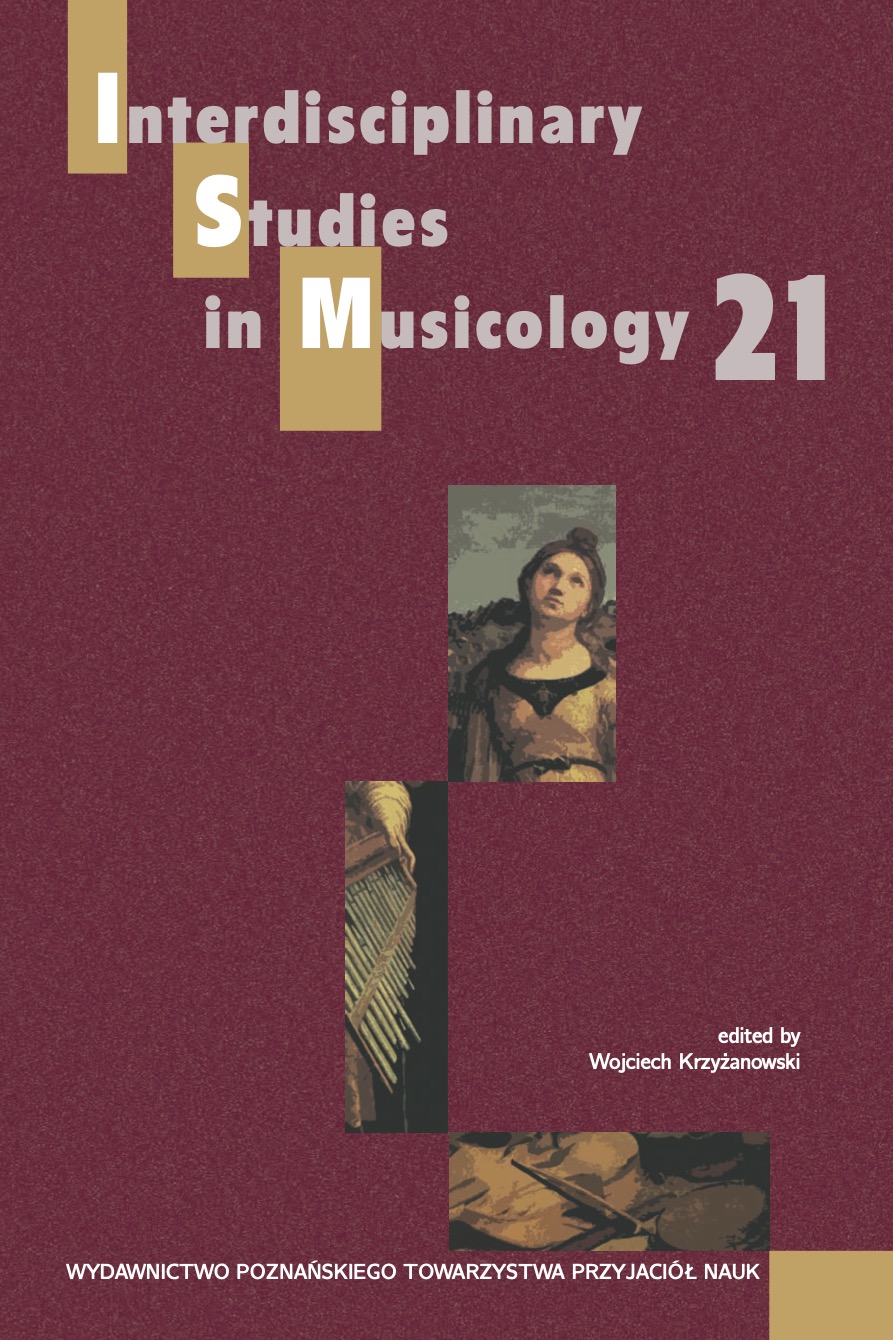“Acoustic wallpaper” under control – the case of musique d’ameublement and Muzak
“Acoustic wallpaper” under control – the case of musique d’ameublement and Muzak
Author(s): Sylwia MakomaskaSubject(s): Music
Published by: Uniwersytet im. Adama Mickiewicza w Poznaniu
Keywords: peripheral attention; effect of “acoustic wallpaper”; musique d’ameublement; Erik Satie; Muzak; ambient music; brian Eno; audiomarketing; acoustic engineering;
Summary/Abstract: Attention is one of the most important cognitive processes. Its functioning and key characteristics play a vital role in the perception of music, especially in everyday situations when music becomes an acoustical background. Thanks to selectiveness, shift and division of attention, the listener can balance between an active and a passive act of listening, however, the results of auditory perception may be difficult to determine.Can the sender, in the process of musical communication, manage the listener’s attention in such a way as to achieve the effect of “acoustic wallpaper” understood as a perception-based effect of background music, where music, in line with the sender’s intentions, is located in the peripheral zone of the listener’s attention, within extensive attention? What function, from the perspective of the sender, is performed by “acoustic wallpaper”? Is it a target result or a mechanism leading to cer- tain reactions in an indirect way? What factors play a decisive role for the efficiency of an adopted strategy?The main aim of this article is to answer the above questions by the analysis of two exemplary concepts of background music (musique d’ameublement by Erik Satie and Muzak) through the prism of the author’s theoretical model of “acoustic wallpaper” (Makomaska, 2021). This novel ap- proach derives from the psychologically-based reciprocal feedback model of musical response (hargreaves, et al., 2005) and socio-musicological studies on pragmatic forms of musical communication (brown, 2006). It assumes that the effectiveness of “acoustic wallpaper” being under con- trol of the sender (the composer or a professional company) is conditioned by correlations between structural characteristics of music, the listener, and historical-social context. The analysis shows that the intended functions of background music (seen from the perspective of the sender) can differ from the real ones and in the case of particular concepts can be moderated by various groups of factors. The results provoke further discussion on the application potential of the proposed model in psychologically, historically and/or marketing-oriented studies on such concepts as e.g. ambient music and contemporary audiomarketing strategies implemented in commercial environments, where music located on the periphery of the listener’s attention can become an effective tool of mani- pulation.
Journal: Interdisciplinary Studies in Musicology
- Issue Year: 2021
- Issue No: 21
- Page Range: 39-55
- Page Count: 17
- Language: English

